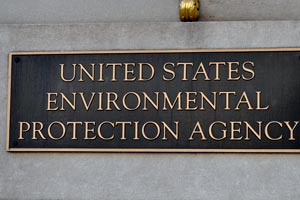Senior Reporter
EPA Plans Proposal for Reducing NOx Emissions by 2024

The announcement came in an EPA response to petitions requesting that the agency take action to reduce NOx emissions from heavy-duty trucks.
The petitioners include the states of New York, Connecticut, Washington, Rhode Island, Massachusetts and Vermont, as well as local air-quality agencies from California, New York, and Ohio.
EPA said the Clean Air Act directs it to revise standards from “time to time” in order to protect public health. It has been 16 years since EPA last revised its NOx standards for heavy-duty highway engines, the statement said.
“The agency’s goal is to develop a program that could be adopted by EPA and the California Air Resources Board, creating a 50-state program, which would streamline compliance for manufacturers,” EPA said. “In developing the proposal, EPA will work with a broad range of stakeholders, including heavy-duty vehicle and engine manufacturers; the California Air Resources Board; labor groups; technology suppliers; environmental nongovernmental organizations; state and local air quality agencies; truck dealerships; trucking fleets; and truck drivers and owners.”
The proposed version of Phase 2, which came out in June 2015, calls for lowering truck GHG emissions in 2021, 2024 and 2027 but had left the NOx limit at 0.2 gram throughout. EPA did lower nitrogen-oxide levels from trucks from 1998 to 2010, but then switched attention to greenhouse gases.
The South Coast Air Quality Management District in metropolitan Los Angeles and the San Joaquin Valley Air Pollution Control District around Bakersfield, Fresno and Modesto were the main petitioners calling for the NOx rule at the same time that caps on carbon dioxide and other greenhouse gases are lowered.
The two California districts have some of the most stubborn smog problems in the nation, combining large populations with geographical impediments to air flow.
In a response to the EPA announcement, the Truck & Engine Manufacturers Association said it is premature to commit to a particular level or form of a future low-NOx standard for heavy-duty vehicles.
“The assessment of whether, to what extent, and how to implement additional heavy-duty on-highway NOx controls must be data-driven, and must take all current regulations into account,” said Jed Mandel, EMA’s President. “It is especially important to ensure that any potential future low-NOx requirements do not compromise compliance with the just-finalized Phase 2 greenhouse gas standards, which will improve heavy-duty on-highway fuel economy by more than 25% over the next 10 years.”
“As an industry that works across state lines, we believe that air quality and emissions regulations should be done exclusively at the federal level and that states should not be allowed to create de facto national standards outside of the federal regulatory process,” said Glen Kedzie, energy and environmental counsel for American Trucking Associations.
“ATA has a long track record of improving the environment, from our work with EPA’s SmartWay Transport Partnership to our support of Phase I and II of EPA’s fuel efficiency rule for medium and heavy-duty trucks,” Kedzie said. “That said, the further ramping down of NOx emissions as envisioned by this petition will likely have a deleterious effect on our industry’s overall fuel economy. We believe any tightening of NOx standards for large trucks must consider these impacts, as well as the impact these technologies may have on engine cost and reliability.”




